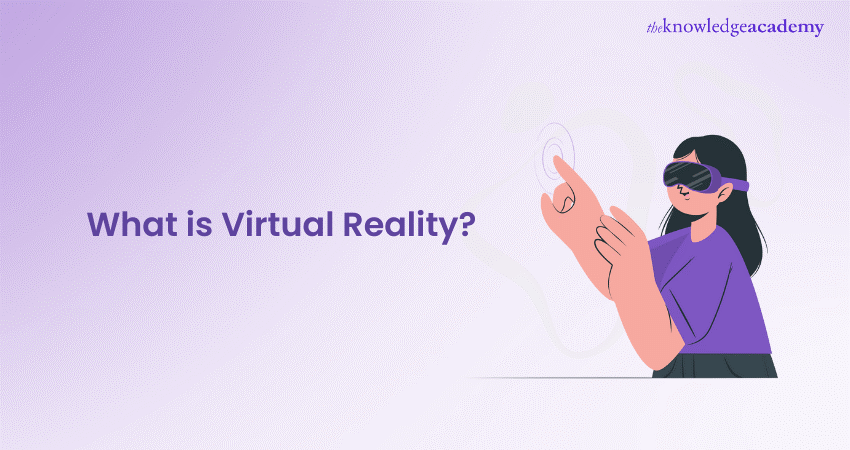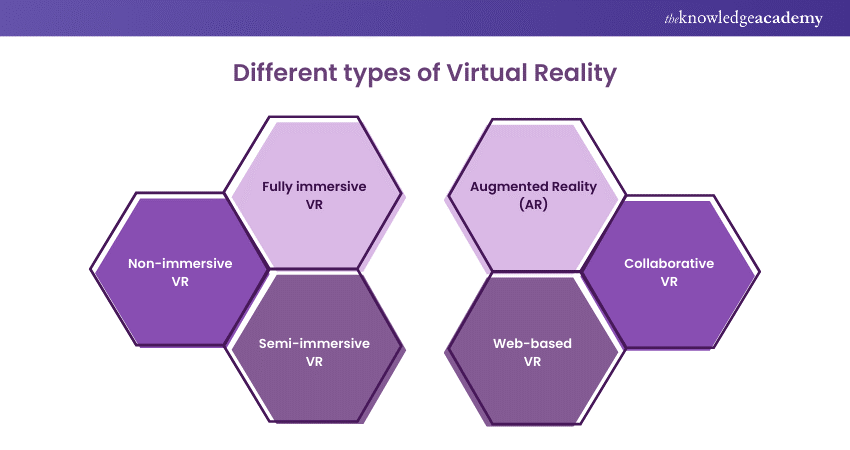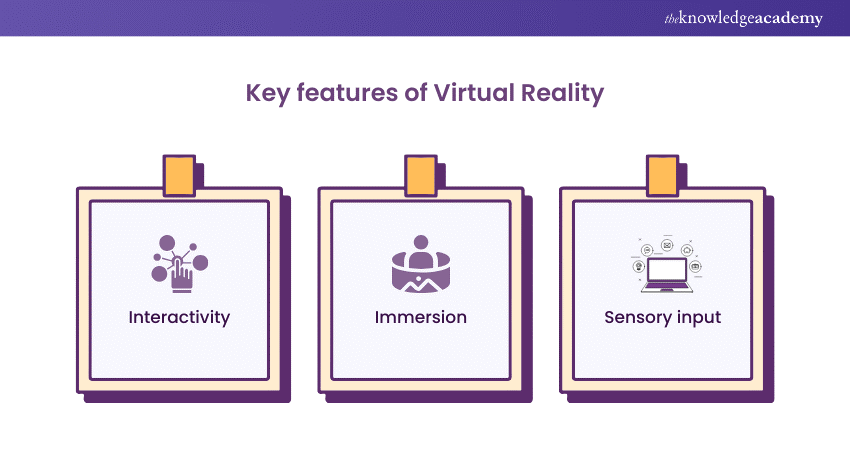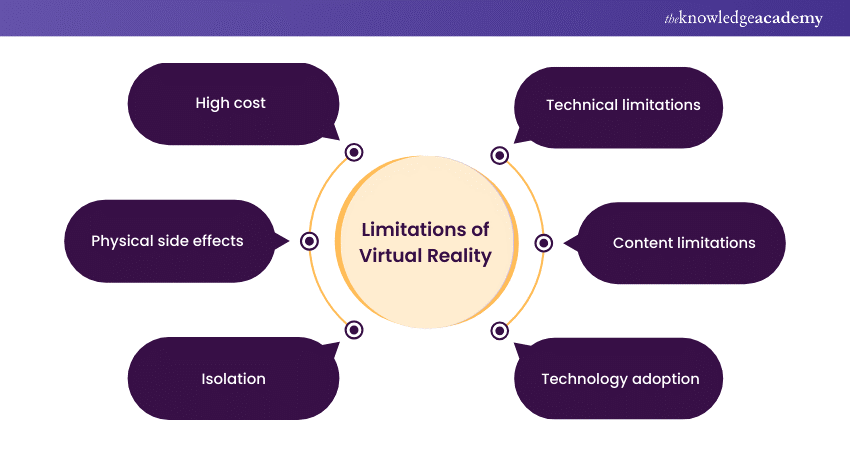We may not have the course you’re looking for. If you enquire or give us a call on +44 1344 203 999 and speak to our training experts, we may still be able to help with your training requirements.
Training Outcomes Within Your Budget!
We ensure quality, budget-alignment, and timely delivery by our expert instructors.

When you step into the world of Artificial Intelligence, Machine Learning, and other digital transformations that have taken our world in a new direction, you will often hear about another innovation –Virtual Reality (VR). But do you know What is Virtual Reality and how is it transforming the way we perceive life?
VR is a simulated experience meticulously crafted by advanced computer technologies to create immersive, three-dimensional environments. This innovation can place an individual inside a virtual world, where they can have an interactive experience that mimics the real world. Wondering why we even need this new technology? Read this blog and find out in detail about What is Virtual Reality, its importance, features, its applications and benefits. Let’s delve in to learn more!
Table of Contents
1) Understanding What is Virtual Reality
2) How does the VR technology work?
3) Different types of Virtual Realities
4) Components of VR technology
5) Key features of Virtual Reality
6) Applications of Virtual Reality
7) Benefits and limitations of Virtual Reality
8) Conclusion
Understanding What is Virtual Reality
Virtual Reality (VR) is an advanced technology that creates a simulated environment, offering a digital experience that's drastically different from the real world. Using sophisticated computer graphics, it replicates a real or imagined environment and simulates a user's physical presence in this space.
As a result, it enables interaction with an unusual world in a seemingly tangible way. This is achieved through devices like VR headsets or rooms equipped with projectors, which immerse the user in a 360-degree environment.
Its applications are vast and varied, from gaming, providing an immersive, interactive experience, to educational and professional training. For instance, in medicine, it enables surgeons to simulate complex surgeries, and in history education, it brings historical events to life for students. As VR technology continues to improve, it's expected to have even more significant impacts across various sectors, revolutionising how we interact with digital content.
How does the VR technology work?
VR technology operates through a combination of hardware, software, and sensory synchronicity, creating a fully immersive experience. Here's how it works:
a) Head-Mounted Display (HMD): VR typically uses a headset or goggles to present the virtual environment. These headsets contain screens and lenses to project images to each eye, creating a stereoscopic 3D effect.
b) Motion tracking: VR devices often include sensors that track the user's head, hand, and body movements. This allows the virtual environment to respond dynamically as the user looks around, moves, or interacts.
c) Input devices: Controllers, gloves, or other tools enable users to interact with the virtual world. These devices are tracked for position and orientation, allowing for natural and intuitive interaction.
d) Audio output: Immersive audio is crucial. VR headsets usually incorporate headphones or are compatible with external audio systems to provide spatial sound, enhancing the realism of the virtual environment.
e) Software: It relies on specialised software to generate realistic images, sounds, and other sensations. This software responds to the user's movements, updating the virtual scene accordingly.
f) Processing power: High-quality VR experiences require powerful processors and graphics capabilities to render complex virtual environments in real-time without latency or lag. These are crucial for maintaining immersion and preventing motion sickness.
Learn more about Advanced Technologies – sign up now for our Advanced Technologies Courses!
Different types of Virtual Realities
Now that you are aware of What is Virtual Reality and how it operates, let’s have a look at its various types. VR has evolved into various forms, each offering unique experiences and catering to different uses. Some of these forms include:

a) Non-immersive VR: This is the simplest form of Virtual Reality, often experienced on a PC or through a video game console. Users interact with a virtual environment using a keyboard, mouse, or controller, viewing the 3D world through a screen. It’s non-immersive, as the user remains aware of the natural world and is not fully enclosed in the virtual environment.
b) Fully immersive VR: Offering the most realistic experience, this type of Virtual Reality uses Head-Mounted Displays (HMDs) with high-resolution screens, advanced motion tracking, and stereo sound. It often requires a powerful computer or gaming console. Sensors in the room and on the user track movement, and specialised gloves or hand controllers allow interaction within the virtual environment.
c) Semi-immersive VR: This is a hybrid between non-immersive and fully immersive Virtual Reality. It typically involves large projection systems or multiple screens that partially immerse the user in a virtual environment. It's commonly used for educational and training purposes, such as flight simulators for pilot training.
d) Augmented Reality (AR): While not pure VR, AR overlays digital information onto the real world. Users can see and interact with virtual objects in their real environment using smartphones or AR glasses.
e) Collaborative VR: This type involves multiple users inhabiting and interacting within the same virtual space. It’s gaining traction in fields like education, where students can learn together in a virtual classroom, or in business, where teams can collaborate in a virtual meeting space.
f) Web-based VR: With this type of Virtual Reality, users can experience VR through a web browser without needing specialised software or powerful hardware. This makes VR more accessible and is ideal for educational content and simple gaming.
Are you interested in learning more about Virtual Reality? Register now for our Virtual Reality (VR) Training!
Components of VR technology
Virtual Reality is an intricate blend of hardware and software components working in unison to create immersive, interactive digital environments. Let’s have a detailed look at its composition:
Hardware components utilised in Virtual Reality
The hardware components of Virtual Reality are critical in creating a believable and immersive VR experience. Key hardware elements include:
a) Head-Mounted Displays (HMDs): These are the most recognisable VR hardware. HMDs are headsets that contain screens and lenses to create a stereoscopic effect, giving users a sense of depth and immersing them in the virtual environment.
b) Motion tracking sensors: Virtual Reality systems often use a combination of gyroscopes, accelerometers, and magnetometers to track the user's head, hand, and body movements. This tracking allows the virtual environment to respond in real-time to the user's actions.
c) Input devices: Controllers, gloves, and treadmills are used to interact with the virtual world. These devices can have buttons, joysticks, and haptic feedback to enhance the user's immersion by providing tactile responses to virtual interactions.
d) Audio systems: Good Virtual Reality systems include spatial audio or 3D sound technology. Headphones or surround sound systems play a critical role in making the VR experience more realistic by providing sound that changes based on the user's orientation and location within the virtual environment.
e) Computational hardware: A powerful computer or gaming console is essential for running VR software. They require high processing power, superior graphics capabilities, and ample memory to render complex 3D environments smoothly without latency.
Software employed in Virtual Reality
Software in Virtual Reality is as essential as the hardware, as it creates and manages the virtual environments that users interact with. The software aspect includes:
a) VR platforms and development engines: Tools like Unity and Unreal Engine are used to develop VR content. These platforms provide the framework for creating and rendering 3D environments, incorporating physics, and managing user interactions.
b) Application software: This encompasses the specific VR applications and games users experience. These are developed for various purposes, from entertainment and gaming to educational and training programs.
c) Simulation software: For professional and educational Virtual Reality applications, simulation software plays a vital role. It accurately replicates real-world scenarios and environments for training and learning purposes.
d) User Interface software: This includes the software that manages the VR system's user interface, making it intuitive and accessible. It allows users to navigate, select, and interact within the VR environment efficiently.
e) Integration tools: These integrate Virtual Reality systems with other software and hardware, such as motion capture systems, external sensors, and haptic devices. This integration enhances the overall VR experience by adding more layers of interactivity and realism.
Enhance your knowledge of Quantum Computing with our Quantum Computing Training!
Key features of Virtual Reality
Virtual Reality technology is defined by several key features that set it apart from traditional media and gaming experiences. These features are interactivity, immersion, and sensory input, each crucial in making VR a unique and engaging technology. Let’s have a look:

Interactivity
Interactivity in Virtual Reality is a fundamental feature that allows users to engage with the virtual environment meaningfully. Unlike passive experiences like watching TV, its interactivity involves two-way communication between the user and the system. This feature is facilitated by various input devices like motion controllers, gloves, and sometimes full-body suits, allowing users to perform actions like grabbing, moving, and manipulating virtual objects.
The level of interactivity can vary greatly depending on the VR system and software. In some experiences, interactivity is limited to looking around a 360-degree environment, while in more advanced setups, users can move freely and interact with a high level of complexity. This feature is essential for creating a sense of presence, making users feel part of the virtual world. It enhances engagement, as users can directly influence and respond to the environment, leading to a more personalised and impactful experience.
Immersion
Immersion is the sensation of being physically present in a non-physical world. Virtual Reality achieves this by creating a convincing, interactive environment that perceptually surrounds the user. This sense of being 'inside' the virtual world distinguishes it from other digital experiences. Immersion can be broken down into two types: psychological immersion, where the user becomes emotionally invested in the virtual world, and physical immersion, where the user's physical movements are mirrored in the virtual environment.
High-quality graphics, realistic 3D audio, and responsive interactive elements contribute to immersion. The more practical and responsive the virtual environment is the more immersive the experience. For instance, a VR game that accurately mimics the physics of the real world will feel more immersive than one that doesn’t. Immersion is critical in maintaining the user's attention and making the VR experience more real, enhancing its impact and effectiveness.
Sensory input
Sensory input is a vital component of VR that helps to create a believable and immersive experience. VR primarily focuses on visual and auditory inputs but increasingly incorporates other senses like touch (haptic feedback) and, in some advanced systems, even smell and taste. The visual input is usually delivered through a head-mounted display, providing a stereoscopic 3D view that adjusts as the user looks around. Auditory input is delivered via headphones or speakers, offering 3D sound that changes based on the user’s orientation and actions in the virtual environment.
Haptic feedback is another essential sensory input, often provided through controllers or specialised suits. It allows users to 'feel' virtual objects and interactions, enhancing realism and immersion. For instance, when users pick up a virtual object, they might feel a vibration in their controller, simulating the touch sensation. By engaging multiple senses, VR creates a more comprehensive and convincing experience, tricking the brain into believing the virtual world is real and enhancing the overall effectiveness of the technology.
Do you want to learn more about Nanotechnology? Join us now for our Nanotechnology Training!
Applications of Virtual Reality
Virtual Reality has transcended its initial entertainment applications to become a versatile tool in various fields. Its ability to create immersive, interactive 3D environments has opened innovative possibilities across many sectors, ranging from education and healthcare to industry and beyond.
Let’s see some of these applications in detail:
Education and training
In education, VR provides an engaging and interactive way to learn and explore topics that would be difficult or impossible to experience in real life. For example, students can take virtual field trips to historical sites, explore the human body in biology classes, or even experience the vastness of space in astronomy lessons. This immersive form of learning enhances understanding and retention of information.
VR also revolutionises training scenarios, particularly in high-risk fields like aviation and medicine. Flight simulators have long used VR to train pilots, allowing them to safely experience and respond to various flight situations. Similarly, in medicine, VR enables surgeons and medical students to practice complex surgical procedures without any risk to real patients.
Healthcare and therapy
In healthcare, Virtual Reality is not just for training; it's also being used as a therapeutic tool. For mental health, exposure therapy is used to treat conditions like PTSD and phobias by gradually exposing patients to their fear in a controlled, virtual environment. It is also used in physical rehabilitation, helping patients regain lost motor skills and improve coordination and balance in a safe, controlled setting.
Architecture and real estate
Virtual Reality allows architects and clients to tour buildings and spaces before they are built in architecture and real estate. This helps better understand the design and facilitates changes before construction begins, saving time and resources. For real estate, virtual tours enable potential buyers to explore properties remotely, making buying more efficient.
Retail and fashion
In the retail sector, Virtual Reality is reshaping how consumers shop. Virtual stores enable customers to browse and try products without physically being in the store. In fashion, designers use VR to create and showcase their designs in virtual runways and fittings, offering a new way to experience fashion.
Gaming and entertainment
Virtual Reality started gaining attention through gaming and continues to be a significant driver in this industry. It offers gamers an immersive experience, placing them directly into the game world. Beyond gaming, it is used in entertainment for virtual concerts, museums, and even theme park rides, providing new ways for people to experience leisure activities.
Automotive industry
The automotive industry uses Virtual Reality for both design and manufacturing. Designers can virtually create and modify car models, speeding up the development process. For manufacturing, VR assists in simulating assembly lines and workflows, helping to identify and resolve potential issues before physical implementation.
Learn how to evaluate networks and understand architecture and design with our Internet of Things IoT Systems and Applications Training – register now!
Benefits of Virtual Reality
There are some benefits of using Virtual Reality. Let's have a look at these points:
a) Immersive learning and training: It provides a realistic environment for practising skills and experiencing scenarios, enhancing education and professional training.
b) Healthcare applications: Offers new methods for therapy and rehabilitation, aiding in treating psychological disorders and physical recovery.
c) Enhanced entertainment: Transforms User Experience in gaming and media with interactive and engaging content.
d) Design and prototyping: Assists in efficient design and development processes in various industries, such as architecture and automotive, through virtual prototyping and testing.
e) Safe simulation environment: Enables risk-free simulation of dangerous or complex scenarios, instrumental in aviation and medical training.
f) Accessibility to experiences: Allows exploration of places and experiences that might be physically inaccessible, broadening educational and cultural opportunities.
Enhance your knowledge of Satellite Communication – sign up now for our Satellite Communication Training!
Limitations of Virtual Reality
Even though Virtual Reality is being used in almost every industry, there are some limitations. These are:

a) High cost: The expense of VR technology, including headsets and necessary hardware, can be prohibitive.
b) Physical side effects: Some users experience motion sickness, eye strain, and disorientation while using VR.
c) Isolation: Virtual Reality experiences can be socially isolating, distracting users from real-world interactions.
d) Technical limitations: Issues like limited resolution and field of view can affect the realism and immersion of Virtual Reality.
e) Content limitations: There is a need for more diverse and high-quality VR content to utilise its capabilities fully.
f) Technology adoption: Widespread adoption is still limited, partly due to the required technological infrastructure and user familiarity.
Get familiarised with Reverse Engineering – register now for our Reverse Engineering Training!
Conclusion
We hope that you now understand What is Virtual Reality, its features, benefits, limitations and applications. In this blog, we have mapped out the VR technology in detail so that you can understand its various immersive experiences across multiple sectors, from education to healthcare.
Do you want to learn about Digital Twin? – register now for our Digital Twin Training!
Frequently Asked Questions

Virtual Reality is a technology that creates immersive digital environments, simulating real or imaginary settings. It typically involves a headset or multi-projected environment, allowing users to interact and experience a 3D world. Sensors track movements, and software renders the environment in real-time, creating an interactive experience.

Yes, VR has diverse applications beyond gaming and entertainment. It's used in education for immersive learning, healthcare for therapy and rehabilitation, architecture for design visualisation, automotive for prototyping, and corporate training for realistic simulations, among other uses.

Some users may experience side effects like motion sickness, eye strain, or temporary disorientation while using VR. It's recommended to use VR in moderation and take regular breaks. The industry is continuously working to minimise these effects with advancements in technology and design.

The Knowledge Academy takes global learning to new heights, offering over 30,000 online courses across 490+ locations in 220 countries. This expansive reach ensures accessibility and convenience for learners worldwide.
Alongside our diverse Online Course Catalogue, encompassing 17 major categories, we go the extra mile by providing a plethora of free educational Online Resources like News updates, blogs, videos, webinars, and interview questions. Tailoring learning experiences further, professionals can maximise value with customisable Course Bundles of TKA.

The Knowledge Academy offers various Virtual Reality courses, including Introduction to Virtualisation Technologies, Quantum Computing Training, and Nanotechnology Training. These courses cater to different skill levels, providing comprehensive insights into Advanced Technology methodologies.
Our Advanced Technology blogs covers a range of topics related to Virtual Reality, offering valuable resources, best practices, and industry insights. Whether you are a beginner or looking to advance your skills, The Knowledge Academy's diverse courses and informative blogs have you covered.

The Knowledge Academy’s FlexiPass is a pre-paid training voucher that is built specifically for clients and their dynamic needs. It provides access to a wide range of courses, at a pre-determined price, with robust safety measures. FlexiPass gives clients the added benefit of upskilling on a budget that best fits them.
Upcoming Advanced Technology Resources Batches & Dates
Date
 Virtual Reality (VR) Training
Virtual Reality (VR) Training
Fri 29th Nov 2024
Fri 10th Jan 2025
Fri 14th Mar 2025
Fri 9th May 2025
Fri 11th Jul 2025
Fri 12th Sep 2025
Fri 14th Nov 2025







 Top Rated Course
Top Rated Course



 If you wish to make any changes to your course, please
If you wish to make any changes to your course, please


